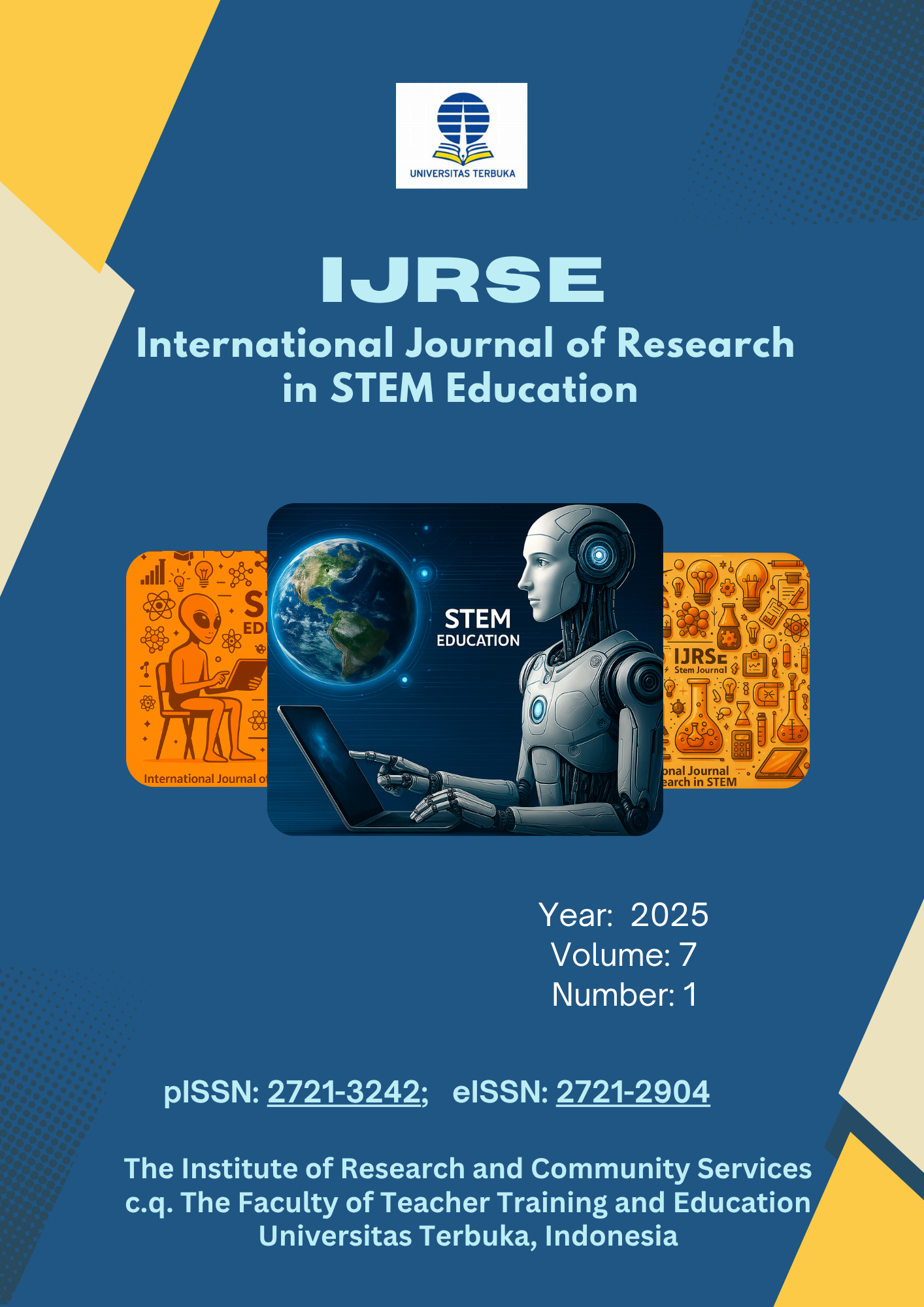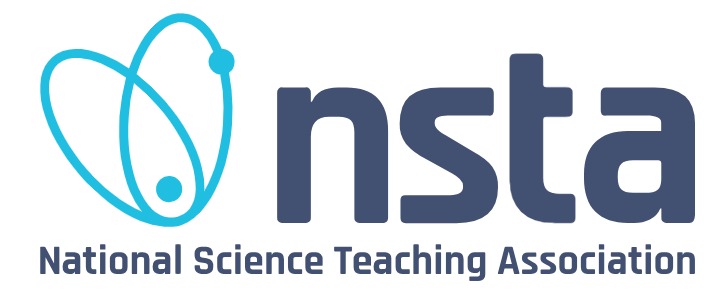High School Learners’ Misconceptions in Genetic Engineering and their Possible Causes
DOI:
https://doi.org/10.33830/ijrse.v7i1.1769Keywords:
Learners, Misconceptions, Genetic Engineering, Science EducationAbstract
Several studies have explored learners’ misconceptions in genetics. However, few have explored learners’ misconceptions in genetic engineering, especially in the context of Lesotho. This study sought to find the common misconceptions learners hold about genetic engineering and their possible causes. The study employed qualitative case study in which convenience sampling was used to identify the participating school and class. A class of thirty-four learners and their teacher, participated. Data were gathered using observations, pre-test, post-test, and semi-structured interviews. Thematic approach was used to analyse and present data. The findings revealed that learners held misconceptions regarding the gene concept, Deoxyribonucleic acid (DNA) concept as well as language misconceptions pertaining to the process of isolation. The possible causes of learners’ misconceptions were identified as vast and unfamiliar scientific terminology, lack of teaching/learning resources, inadequate learners’ biology textbooks and teachers’ incompetence in genetic engineering content and the use of ineffective teaching strategies.
References
Ahmed, M. A., Yahaya, L., Opatola, Y. M., & Sulaiman, M. M. (2018). Identification of alternative conceptions of genetics held by senior school students in Ilorin, Nigeria, using a three-tier diagnostic test. Kiu Journal of Social Sciences, 4(1), 97-104. https://doi.org/10.17478/jegys.574524
Alanazi, F. H. (2023). Saudi students’ and science teachers’ knowledge of and attitudes towards biotechnology. Journal of Biological Education, 57(1), 196-213. https://doi.org/10.1080/00219266.2021.1884584
Alexandrina, S., & Carmen-Maria, I. (2014). Aspects on Consumers attitude Toward Genetically Modified Foods Among Youth. Management Strategies Journal, 26(4), 741-747. https://ideas.repec.org/a/brc/journl/v26y2014i4p741-747.html
Almeida, M., & Diogo, R. (2019). Human Enhancement: Genetic Engineering and Evolution. Evolution, Medicine, and Public Health, 2019(1), 183-189. https://doi.org/10.1093/emph/eoz026
Baris, C. C., & Kirbaslar, F. G. (2015). A study of certain biology and biotechnology concepts in secondary school and high school course books in terms of scientific competency. Procedia - Social and Behavioral Sciences, 420-426. https://doi.org/10.1038/nbt.2955
Bonde, M., Makransky, G., Wandall, J., Larsen, M. V., Morsing, M., Jarmer, H. Ø., & Sommer, M. (2014). Improving biotech education through gamified laboratory simulations. Nature Biotechnology, 32(7), 694-697. https://doi.org/10.1038/nbt.2955
Chen, S.Y., Chu, Y.R., Lin, C.-Y., & Chiang, T.Y. (2016). Students’ Knowledge of, and Attitudes Towards Biotechnology Revisited, 1995–2014: Changes In Agriculture Biotechnology But Not In Medical Biotechnology. Biochemistry and Molecular Biology Education, 44(5), 474-491. https://doi.org/10.1002/bmb.20969
Cohen, L., Manion, L., & Morrison, K. (2018). Research Methods in Education. Routledge. https://doi.org/10.4324/9781315456539
Duda, H. J., Wahyuni, F., & Setyawan, A. E. (2020). Plant biotechnology: Studying the misconception of biology education students. In AIP Conference Proceedings (Vol. 2296). AIP Publishing. https://doi.org/10.1063/5.0030449
Elladora, S. T., Gaylan, E. G., Taneo, J. K., Callanga, C. H., Becbec, J., Bercero, G. I., . . . Picardal, M. T. (2024). Challenges in Teaching Biotechnology in the Philippines STE Program. International Journal of Learning, Teaching and Educational Research, 23(3), 367-389. https://ijlter.org/index.php/ijlter/article/view/9846
Etobro, A. B., & Banjoko, S. O. (2017). Misconceptions of Genetics Concepts among Pre-service Teachers. Global Journal of Educational Research, 16(2), 121-128. DOI:http://dx.doi.org/10.4314/gjedr.v16i2.6
Examination Council of Lesotho. (2017). Biology Examiners' report. Maseru. https://www.examscouncil.org.ls/examiners-report
Examination Council of Lesotho. (2018). Biology examiner's report. Maseru. https://www.examscouncil.org.ls/examiners-report
Fauzi, A., Rosyida, A. M., Rohma, M., & Khoiroh, D. (2021). The difficulty index of biology topics in Indonesian senior High School: Biology UNdergraduate Students' perspectives. JPBI (Jurnal Pendidikan Biologi Indonesia), 7(2), 149-158. https://doi.org/10.22219/jpbi.v7i2.16538
Freire, Xavier, A., & Moraes. (2013). High School Students' Attitudes Associated with Biotechnology and Molecular Genetics Concepts in Brazil. Creative Education, 4(2), 149-153. https://doi.org/10.4236/ce.2013.42021
Gercek, C. (2020). High School Students’ Cognitive Structures and Views: What is a Genetically Modified Organism? Journal of Qualitative Research in Education , 8(1), 96-106. https://doi.org/10.14689/issn.2148-2624.1.8c.1s.8c.1s.5m
Ilyas, A., & Saeed, M. (2018). Exploring Teachers’ Understanding about Misconceptions of Secondary Grade Chemistry Students. International Journal for Cross-Disciplinary Subjects in Education, 9(1), 3323-3328. https://infonomics-society.org/wp-content/uploads/IJCDSE/Exploring-Teachers-Understanding-about-Misconceptions-of-Secondary-Grade-Chemistry-Students.pdf
Jin, H., & Ouyang, X. (2019). Research on the Application of Internet-assisted Method in the Teaching of Fermentation Engineering Based on the Marine Characteristics. In 2nd International Seminar on Education Research and Social Science (ISERSS 2019) (pp. 622-624). Atlantis Press. https://doi.org/10.2991/iserss-19.2019.182
Kahraman, S. (2020). Investigation of preservice science teachers' perceptions about biotechnology, genetic engineering and cloning concepts. Necatibey Faculty of Education Electronic Journal of Science and Mathematics Education, 14(1), 57-83. https://doi.org/10.17522/balikesirnef.649679
Kessinger, L. (2013). The Evolution of Genetic Engineering. Genetic Engineering and Human Health, 6, 1-9. https://www.researchgate.net/publication/313658334_The_Evolution_of_Genetic_Engineering
Kooffreh, M. E., Ikpeme, E. V., & Mgbado, T. I. (2021). Knowledge, perception, and interest regarding biotechnology among secondary school students in Calabar, Cross River State, Nigeria. Boichemistry and Molecular Biology Education, 49(4), 664-668. https://doi.org/10.1002/bmb.21507
Kusmawan, U. (2024). Beyond Traditional Practicums: Exploring the Potential of Scalable Practicum in Science Courses. Studies in Learning and Teaching, 5(3), 622-637. https://doi.org/10.46627/silet.v5i3.505
Kusmawan, U. (2024). Beyond Traditional Practicums: Exploring the Potential of Scalable Practicum in Science Courses. Studies in Learning and Teaching, 5(3), 622-637. https://doi.org/10.46627/silet.v5i3.505
Machova, M., & Ehler, E. (2023). Secondary school students’ misconceptions in genetics: origins and solutions. JOURNAL OF BIOLOGICAL EDUCATION, 57(3), 633-646. https://doi.org/10.1080/00219266.2021.1933136
Makoti, T. (2015). Assessing Mendelian Inheritance conseption and reduction of misconceptions held by Lesotho secondary School Pupils by comparing effectiveness of traditional mode of instruction with simulations. (Unpublished Masters' Thesis), National University of Lesotho. https://pmc.ncbi.nlm.nih.gov/articles/PMC4144465/
Ministry of Education and Training. (2023). LGCSE biology 0180 syllabus. Government of Lesotho. http://www.education.gov.ls/index.php
Nelson-Ebimie, D. M., Adolphus, T., Omeodu, D. M., & Naade, N. B. (2023). Identification of Biology Students’ Misconceptions in Genetics Among Secondary School Students in Nembe Local Government Area in Bayelsa State. Rivers State University Journal of Education (RSUJOE), 26(1), 11-19. https://rsujoe.com.ng/index.php/joe/article/download/150/135/425
Occellia, M., & Valeiras, N. (2021). Knowledge and attitudes towards biotechnology in high school students in Córdoba, Argentina. Journal of Science Education, 21(2), 44-50. https://www.researchgate.net/publication/353773385
Osman, E., BouJaoude, &. S., & Hamdan, H. (2018). An Investigation of Lebanese G7-12 Students’ Misconceptions and Difficulties in Genetics and Their Genetics Literacy. International Journal of Science and Mathematics Education, 15, 1257-1280. doi:10.1007/s10763-016-9743-9. https://www.researchgate.net/publication/302062218
Posner, G. J., Strike, K. A., Hewson, P. W., & Gertzog, W. A. (1982). Accommodation of scientific conception: Toward a theory of conceptual change. Science Education, 66(2), 2111-227. https://doi.org/10.1002/sce.3730660207
Purbosari, P. P., & Astuti, P. (2023). Students' Knowledge and Attitude toward Genetic Engineering. Jurnal Penelitian Pendidikan IPA, 9(1), 433-443. https://jppipa.unram.ac.id/index.php/jppipa/article/view/2875
Robert, J., & Baylis, F. (2008). In Encyclopedia of Public Health (pp. 35-39). Elsevier. doi:10.1016/B978-12373960-5.00133-7 DOI: 10.1016/B978-012373960-5.00133-7
Siritantian, N. (2022). The benefits and risks of using genetic engineering in medical applications. International Journal of Research Publications, 113(1), 114-124. https://doi.org/10.47119/IJRP10011311120214136
Suryanti, E., Fitriani, A., Radjeki, S., & Riandi, R. (2018). Identification of conceptual understanding in biotechnology learning. IOMaterials Science and EngineeringP Conference Series:, 335. https://doi.org/10.1088/1757-899X/335/1/012093
Troupe, G. A., Peterson, M., Golick, D., Turnbull, S., & Lee, D. (2018). Improving genetic engineering secondary education through a classroom ready online resource. Journal of Agricultural & Food Security, 19(1), 37-54. https://www.researchgate.net/publication/320822969
Vlckova, J., Kubiatko, M., & Usak, M. (2016). Czech HighSchool Students' Misconceptions about basic Genetic Concepts: Preliminary Results. Journal of Baltic Science education, 15(6), 738- 745. https://eric.ed.gov/?id=EJ1426706
Vuran, F. E., Cigdemoglu, C., & Mirici, S. (2020). The Effect of Genetic Engineering and Biotechnology Activities on Students' Achievement, Attitudes and Self-Evaluations. International Online Journal of Education and Teaching, 7(1), 373-388. http://iojet.org/index.php/IOJET/article/view/813
Wikandri, R., Manikharda, Baldermann, S., Ningrum, A., & Taherzadeh, M. J. (2021). Application of cell culture technology and genetic engineering for production of future foods and crop improvement to strengthen food security. Bioengineered, 12(2), 11305-11330. https://doi.org/10.1080/21655979.2021.2003665
Wisch, J. K., Farrell, E., Siegel, M., & Freyermuth, S. (2018). Misconceptions and persistence: Resources for targeting student alternative conceptions in biotechnology. Biochemistry and Molecular Biology Education, 46(6), 602-611. https://doi.org/10.1002/bmb.21176
Yasin, R. M., Amin, L., & Hin, K. K. (2019). Teaching and Learning of the 21st Century biotechnology in secondary school additional science. 64(3), 43-52. https://eric.ed.gov/?id=EJ1190933
Cimer, A. (2012). What makes biology learning difficult and effective: Students’ views. Educational Research and Reviews, 7(3), 61-71. https://academicjournals.org/journal/ERR/article-full-text-pdf/6AD7EA84352

Downloads
Published
How to Cite
Issue
Section
License
Copyright (c) 2025 Nthatisi Puputla, Doreen Taurai Tshuma

This work is licensed under a Creative Commons Attribution-NonCommercial 4.0 International License.
Content Licensing, Copyright, and Permissions
1. License
International Journal of Research in STEM Education (IJRSE) adopts the Creative Commons Attribution-NonCommercial 4.0 International License (CC BY-NC 4.0) as the optimal license for the publication, distribution, use, and reuse of scholarly works for non-commercial purposes.
The non-commercial use of the article will be governed by this license, which allows others to share and adapt the work provided proper attribution is given to the author(s) and the journal.
Creative Commons Attribution-NonCommercial 4.0 International License.
Creative Commons License: CC BY-NC 4.0
2. Author's Warranties
The author warrants that the article is original, written by the stated author(s), has not been published before, contains no unlawful statements, does not infringe the rights of others, is subject to copyright vested exclusively in the author, is free of any third-party rights, and that all necessary written permissions to quote from other sources have been obtained by the author(s).
3. User Rights
The International Journal of Research in STEM Education aims to disseminate published articles as freely as possible. Under the Creative Commons license, users are permitted to copy, distribute, display, and perform the work for non-commercial purposes only, provided that proper attribution is given to the author(s) and this journal.
4. Rights of Authors
Authors retain the following rights:
- Copyright and proprietary rights related to the article, such as patent rights.
- The right to use the substance of the article in future works (e.g., lectures, books).
- The right to reproduce the article for personal purposes.
- The right to self-archive the article.
- The right to enter into separate, additional non-exclusive contractual arrangements for the distribution of the article’s published version (e.g., posting to an institutional repository or publishing it in a book), with acknowledgment of its initial publication in IJRSE.
If the author has a non-exclusive publishing contract with another publisher under a more restrictive license, the author still retains all rights to republish or distribute the work elsewhere, including commercially, as the author is not bound by the license conditions imposed on the journal.
5. Co-Authorship
If the article has multiple authors, the signatory of this agreement warrants that he/she has been authorized by all co-authors to sign this agreement on their behalf and agrees to inform all co-authors of the terms of this agreement.
6. Termination
This agreement may be terminated by either the author or IJRSE with two months’ notice if the other party has materially breached this agreement and failed to remedy such breach within one month after receiving written notice.
No breach or violation of this agreement will cause automatic termination or affect the license granted to IJRSE.
7. Royalties
This agreement entitles the author to no royalties or other fees. To the extent legally permissible, the author waives the right to collect royalties in respect of any use of the article by IJRSE or its sublicensees.
8. Miscellaneous
IJRSE will publish the article (or have it published) once the editorial process has been successfully completed.
The journal reserves the right to edit the article for style, punctuation, spelling, capitalization, referencing, and consistency as deemed appropriate.
The author acknowledges that the article will be made publicly accessible, and such access will be free of charge for readers.







